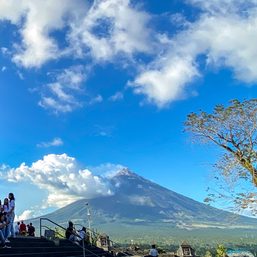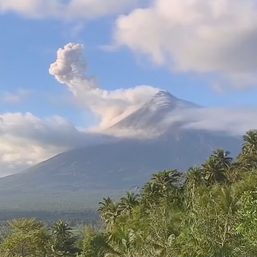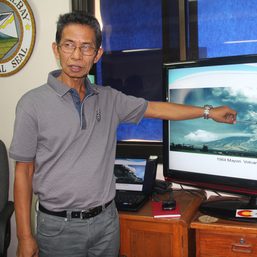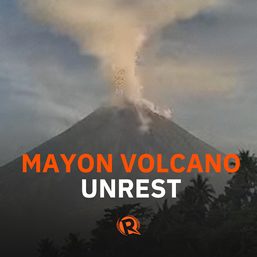SUMMARY
This is AI generated summarization, which may have errors. For context, always refer to the full article.

Taal Volcano emitted a high level of sulfur dioxide (SO2) on Thursday, August 19, prompting the Philippine Institute of Volcanology and Seismology (Phivolcs) to again warn the public about the health effects of the resulting volcanic smog and possibly further escalation in volcanic activity.
In an advisory, Phivolcs said SO2 emission from Taal Volcano’s main crater was measured at 15,347 tons per day on Thursday morning.
“This marks a rising trend in volcanic SO2 degassing” since Friday, August 13, with the average in the past week reaching 8,351 tons per day.
Taal Volcano’s highest-ever SO2 emission was recorded last July 4 at 22,628 tons per day.
Phivolcs said the latest spike in SO2 may “forewarn of potential phreatomagmatic activity” similar to the eruption last July 1.
It also noted that in the past week, steam-rich plumes 1 to 3 kilometers tall were observed from the main crater. Along with the SO2 emission and atmospheric conditions, this has led to volcanic smog or vog in the vicinity of the volcano.
“The high SO2 flux, water vapor emitted in plumes, weak air movement, and solar radiation will continue to produce volcanic smog or vog over the Taal region,” Phivolcs said.
Phivolcs added that it has already received reports of the vog’s “adverse effects” on some residents of Talisay and Agoncillo towns in Batangas province. “Hazy conditions” were also seen over Taal Lake and municipalities surrounding the lake.
“As a reminder, vog consists of fine droplets containing volcanic gas such as SO2 which is acidic and can cause irritation of the eyes, throat, and respiratory tract,” Phivolcs said.
People with health conditions, the elderly, pregnant women, and children are particularly vulnerable to vog.
For protection, these are Phivolcs’ tips:
- Avoid outdoor activities, stay indoors, and shut doors and windows.
- Cover nose, ideally with an N95 face mask.
- Drink plenty of water to reduce any throat irritation or constriction.
- If belonging to any of the sensitive groups mentioned, seek help from a doctor or the barangay health unit if needed.
Phivolcs also advised local government units in areas surrounding Taal Volcano to conduct health checks, “consider temporary evacuation of severely exposed residents,” and monitor activities of Taal Lake workers “to ensure that no one ventures too closely to Taal Volcano Island,” which must remain off-limits to all.
Taal Volcano has been under Alert Level 2 since July 23, downgraded to that level after more than three weeks at Alert Level 3. Under Alert Level 2, there could be “sudden steam- or gas-driven explosions and lethal accumulations or expulsions of volcanic gas.” – Rappler.com
Add a comment
How does this make you feel?








There are no comments yet. Add your comment to start the conversation.